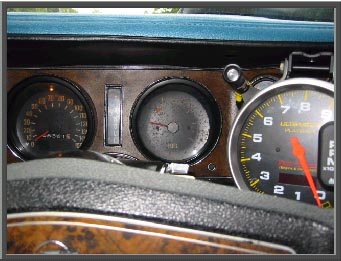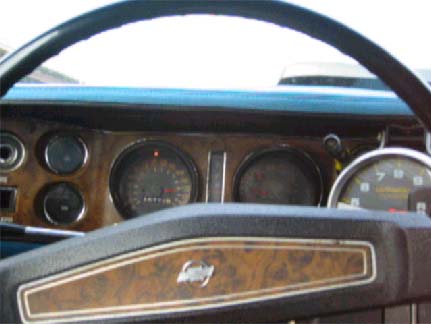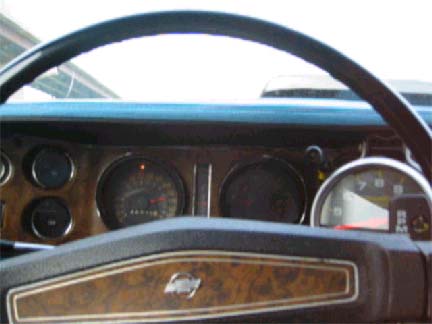

























Anthony's note: Harold sent this out a while back as a MS word attachment in an email dated Monday, May 19, 2003. Since his old site, forgedperformance.com is no more, I figured this article - and other Harold articles - should have a better place to live than my old email folder.
Why do automotive manufactures put all those numbers on speedometers if they don't intend for you to use them? Sure most local law enforcement officials don't care what your speedometer is capable of monitoring, as long as the monitored speed doesn't exceed the posted speed limit. Nor does the average automobile care what your speedometer is capable of monitoring, because if it doesn't have enough horsepower and/or proper gearing the speed you which to monitor will never be obtained.

Despite these minor obstacles the average automotive enthusiast is somewhat obsessed with making the speedometer in their car read the highest number possible. Some of us find a local track to fulfill this desire, others wait for that perfect time when a familiar road is clear (as far as the eye can see), and some of us do both.
The Goal
Automotive enthusiasts are for the most part goal orientated. Even though speeding may appear to be an immature act without reason to most, a true enthusiast usually has a goal (even if it's just to go faster than the last time). In May of 1970 Car & Driver road tested a 1970 Camaro Z/28. The engine was a solid lifter cam with 360HP@5,600 RPM and 370lbs-ft@4,000RPM. This automatic transmission car turned 14.2 sec. @ 100.3 MPH in the quarter mile, had a 0 to 60 time of 5.8 sec, and a top speed of 118 mph (observed) at a screaming 6,500 RPM. This car also got between 9.5 and 12.5 MPG (as tested), a result of it's 4.10 to 1 Final drive ratio (rear gear). All this being said A guy with a home grown 1970 350 Camaro might see a goal here. How would his cars top speed compare with the Z/28 tested in the Car & Driver article? Also after just purchasing a new set of H speed rated (130MPH sustained) tires, this guy sees another goal (can you say tire test).
The Test
I lieu of a track a very long (3/8 mile) freeway entrance ramp was used. The ramp is an uphill climb (approximately 50 feet high) to the freeway. It's straight for a ¼ mile then transitions to a wide sweeping turn in the last 1/8 mile before merging into the freeway. Top speed was never obtained in this test because another goal; getting the car slowed down to legal and safe merge speed superceded the rest, thus reducing the overall test distance. But did we beat the Z/28 and come close to testing the rating of the tires, well see for yourself.

In the last 1/8 mile of the ramp you can see the wheel is slightly turned, and a section of the freeway that the car will merge with is visible in the upper left-hand corner. The car slowed from 120 MPH plus to a safe and legal 55 MPH in well under 250 feet.
In Conclusion
Some guys would be happy with the number above, but I know some of you are saying, hey there more numbers left 130, 140, 150?
Side Bar
Using all of speedometer is a lot easier than self documenting it. In addition to shifting, steering, taking the damn picture and braking, you got to pick a place and time where there is little or no traffic. Remember if you are not on a race track where the cars are traveling about the same speed as you, at 100 MPH plus hitting a slower car traveling at 55 MPH is like hitting a steel wall filled with Gas at 45 MPH plus. Hey try driving staggered around pylons in an empty parking lot at 45 MPH and you will soon see it isn't easy and there less than 1/10 the size of a standard car. Patience and safety go hand in hand. When looking for a racing discipline that parallels driving on public roads I look to the American Le Mans Series. With three classes of cars top speeds often range from 145 to 208 on the same track, with a field of up to 50 cars. These guys don't pull Fast and Furious, I cut you off but where am I going to go know moves. They pass and race with precision and patience. They often look for a hole, wait till it's clear, and always have a place to go in case something goes wrong. You do the same, Later.
On the way up to 120 MPH plus.
